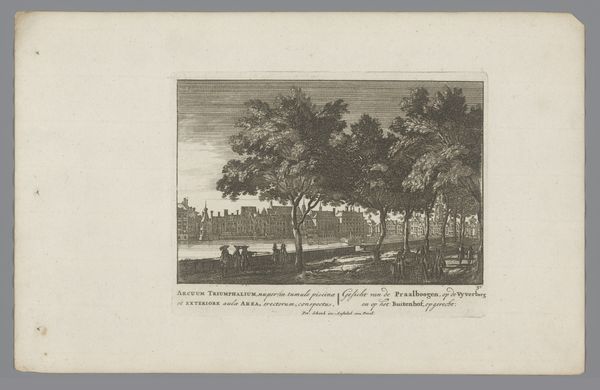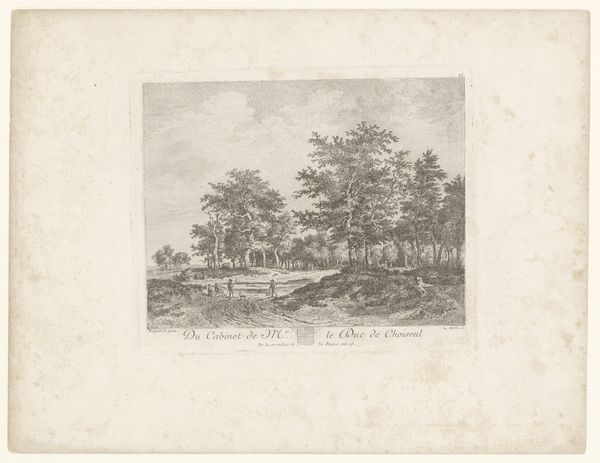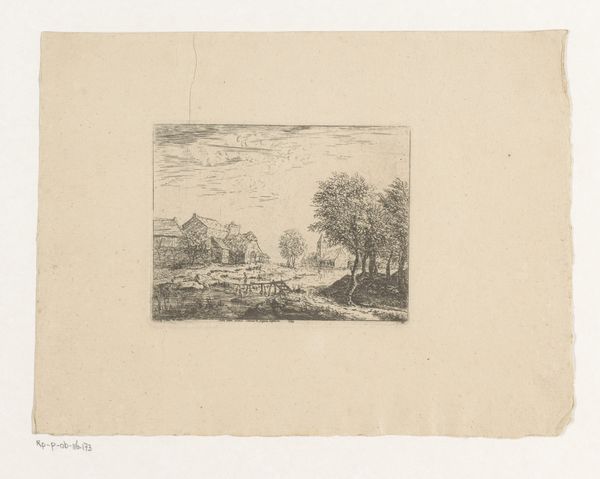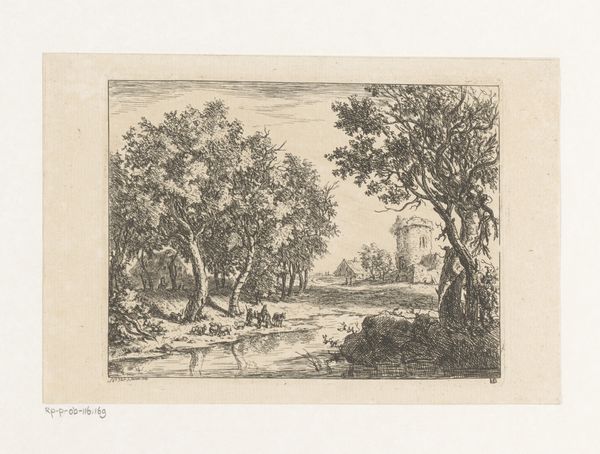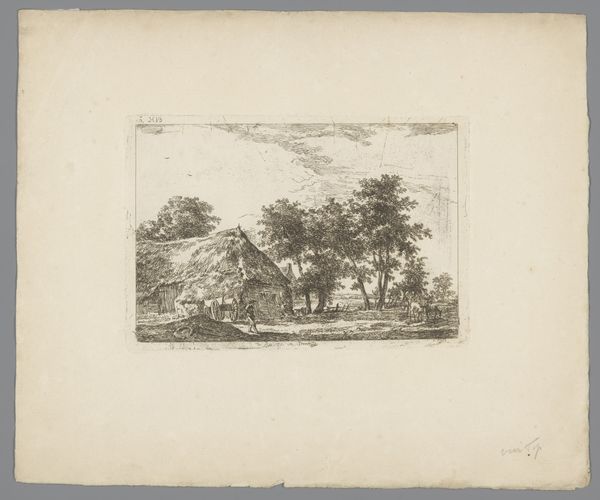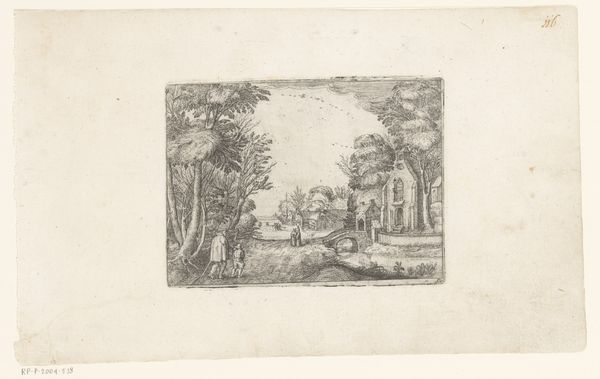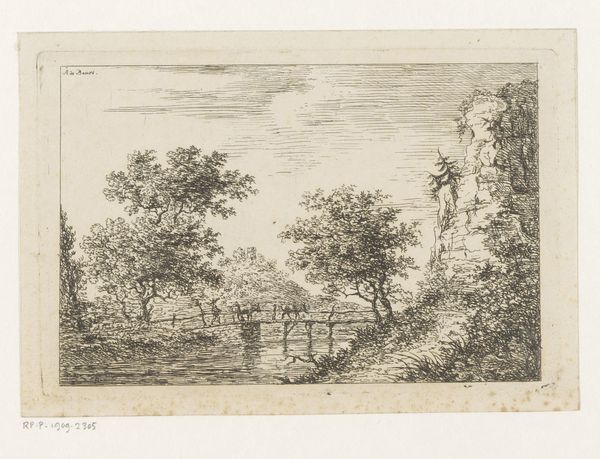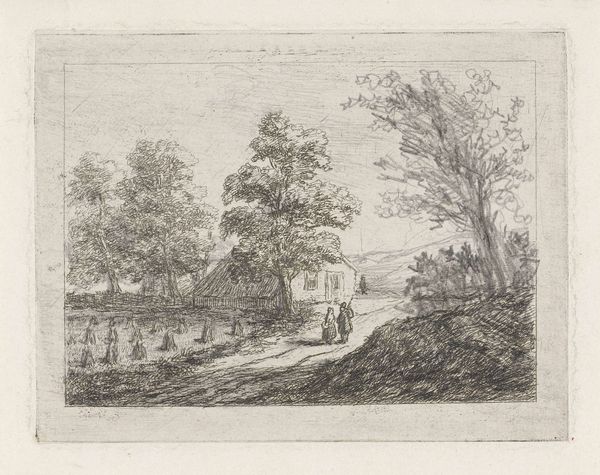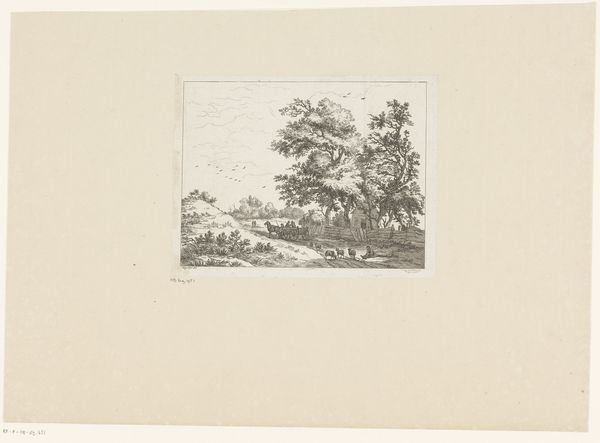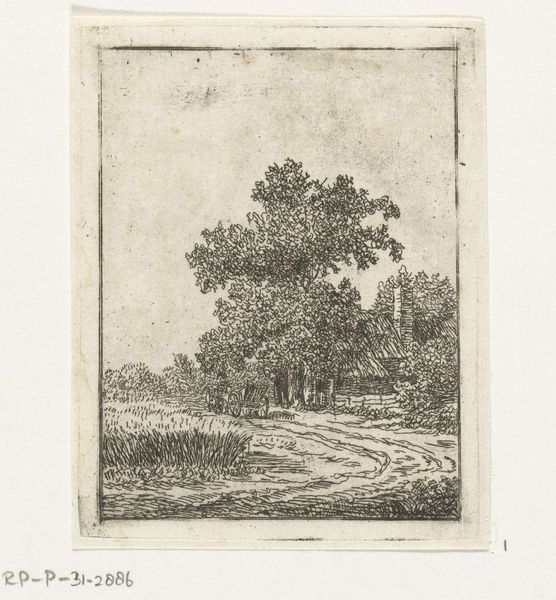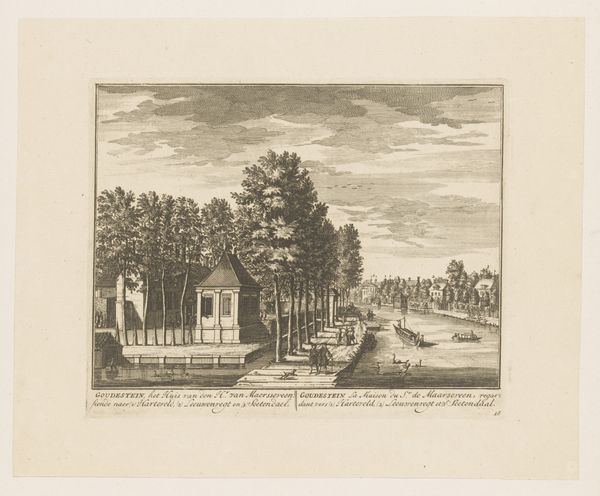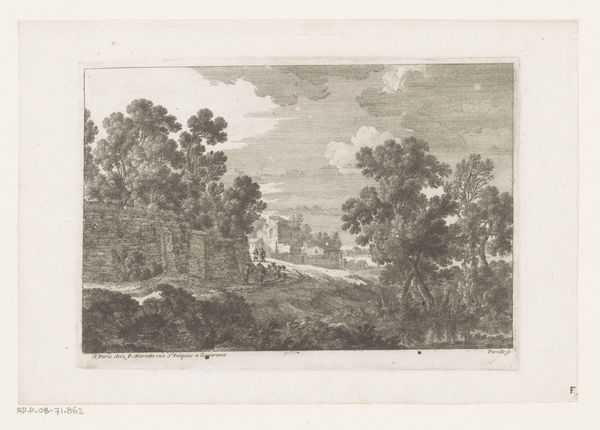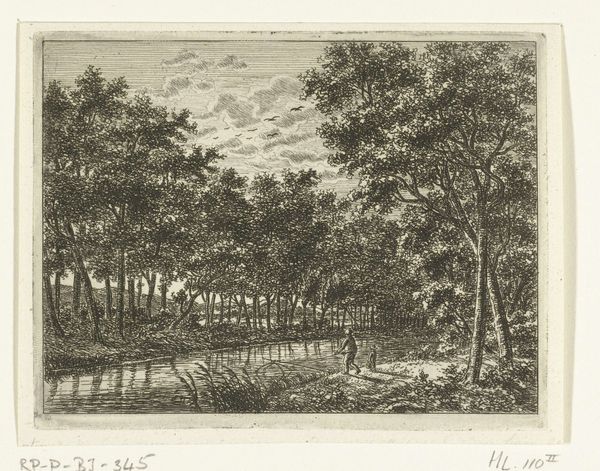
print, etching, paper
#
dutch-golden-age
# print
#
etching
#
landscape
#
river
#
paper
Dimensions: height 137 mm, width 159 mm
Copyright: Rijks Museum: Open Domain
Editor: This is "View of the Amstel River at the Molentje Inn" by Jan Caspar Philips, made sometime between 1736 and 1773. It's an etching on paper. I find the peacefulness of the scene quite striking. What sociopolitical context informs your interpretation of it? Curator: It’s deceptively peaceful, isn’t it? Beyond the serene landscape, consider the Dutch Golden Age, the period in which this piece was created. There was immense wealth creation happening at the time thanks to the Dutch East India Company’s brutal colonial exploitation and slave trade. How might this idyllic scene serve to mask these more problematic aspects of Dutch society? Editor: I see your point. It's almost like the image is curating a specific, sanitized narrative of the time. Does the choice of landscape, specifically the river and windmill, contribute to this narrative? Curator: Absolutely. Waterways were the lifeblood of trade, enabling Dutch power and wealth accumulation. The windmill, often celebrated as a symbol of Dutch ingenuity, simultaneously points towards a relentless exploitation of natural resources. In your view, who would this idealized version of the landscape most benefit? Editor: Likely those who benefited directly from the colonial system – the merchant class, the ruling elite. Perhaps the artwork served as propaganda? Curator: Precisely! It prompts us to consider whose stories are being told and whose are being intentionally obscured. Thinking about today, what other everyday images might carry unacknowledged undertones? Editor: Social media, for one, often paints an unrealistic picture of individual successes, masking systemic inequalities. Thank you; I never would have viewed this placid image as being fraught with hidden undertones before our discussion. Curator: That’s the power of art history: to see the threads connecting past injustices to present inequalities, hopefully sparking conversations that catalyze future transformations.
Comments
No comments
Be the first to comment and join the conversation on the ultimate creative platform.
